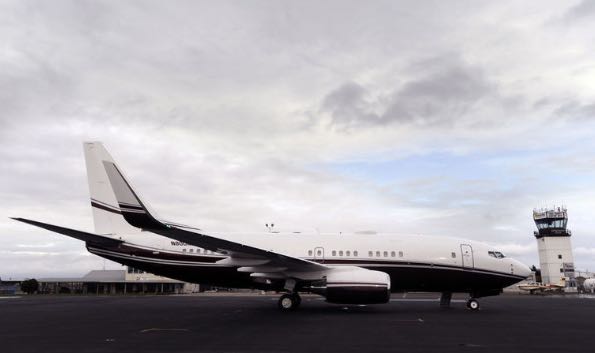 When a Boeing 737 jetliner taxied on the runway at Yuba County Airport last month, airport manager Mary Hansen said it was the largest plane she had seen land at the Olivehurst facility.
When a Boeing 737 jetliner taxied on the runway at Yuba County Airport last month, airport manager Mary Hansen said it was the largest plane she had seen land at the Olivehurst facility.
While the twin-jet, narrow-body airliner is considered only a short-to-medium range aircraft, its presence on the 6,006-foot-long Yuba County runway caused quite a visual stir.
Daniel Honeycutt, who has owned and operated Honeycutt Aviation at the airport for 13 years, said at the time it was “definitely cool” to see such a large aircraft in front of his business.
The fact that the airliner, which brought noted Hollywood director Steven Spielberg to town (for filming at Beale Air Force Base of a movie about the U-2), drew so much attention perhaps speaks to the unmet potential of the facility.
“It’s kind of fun to see Steven Spielberg and celebrities who come to the amphitheater fly into the airport, but frankly the Yuba County Airport is vastly underutilized,” said John Fleming, Yuba County’s economic development director.
At the same time, Fleming said, it’s a key piece in the economic development future for the county. Its expansive runway will be an attraction for corporations who do business up and down the state, he said.
“There is going to be a high demand for this area to get to other places efficiently and quickly,” Fleming said. “Local pilots have described facilities like Yuba as a time machine that allows them to get to the Bay Area quickly.
“From a business perspective, the airport is already being utilized by numerous businesses.”
But upgrades to accommodate businesses, especially those at the nearby industrial park, will likely have to wait until additional economic development occurs in the county. “When the south county is in a growth mode, the demand will be much greater to use the airport as a resource,” Fleming said.
No Yuba County general funds go into the operation or for improvements at the airport. Its annual $300,000 to $350,000 budget is generated entirely by hangar fees and leases, said Doug McCoy, the county’s administrative services director.
The budget is pretty much used up on general day-to-day airport operations. Hansen is the only Yuba County staffer at the airport, with ongoing maintenance done by regular countywide public works crews.
McCoy agreed the airport is an “economic driver” for Yuba County. But improvements are also largely dependent on economic development, primarily in the surrounding industrial park.
“Any significant add-ons would have to be driven by a large influx in business,” he said. “We are actively trying to bring in business.”
None of about $2.5 million in annual property taxes generated at the airport industrial park go into the county’s general fund. All of it is used to help pay for other county services that have suffered during the economic recession.
Any major projects — such as $1 million in work two years ago to replace a portion of the tie-down area and an ongoing $800,000 project to redo the rest of the tie-down — are done through Federal Aviation Administration grants. And even those grants require a local match that comes from the regular airport budget.
“That’s the issue,” McCoy said. “It’s the only way we can do the larger aviation projects.”
Still, there are signs that business-generated improvements could be sooner than later.
Fleming said an industrial park business, which he declined to identify, has requested direct access from its location to the primary airport runway. That would require construction of a taxiway and approval by the FAA, he said.
“But that is something we are involved with right now,” Fleming said. “This is something we are hoping we will be able to talk about in the next six months.”
“The point is we have businesses that have located around the airport because it is a main airport.”
